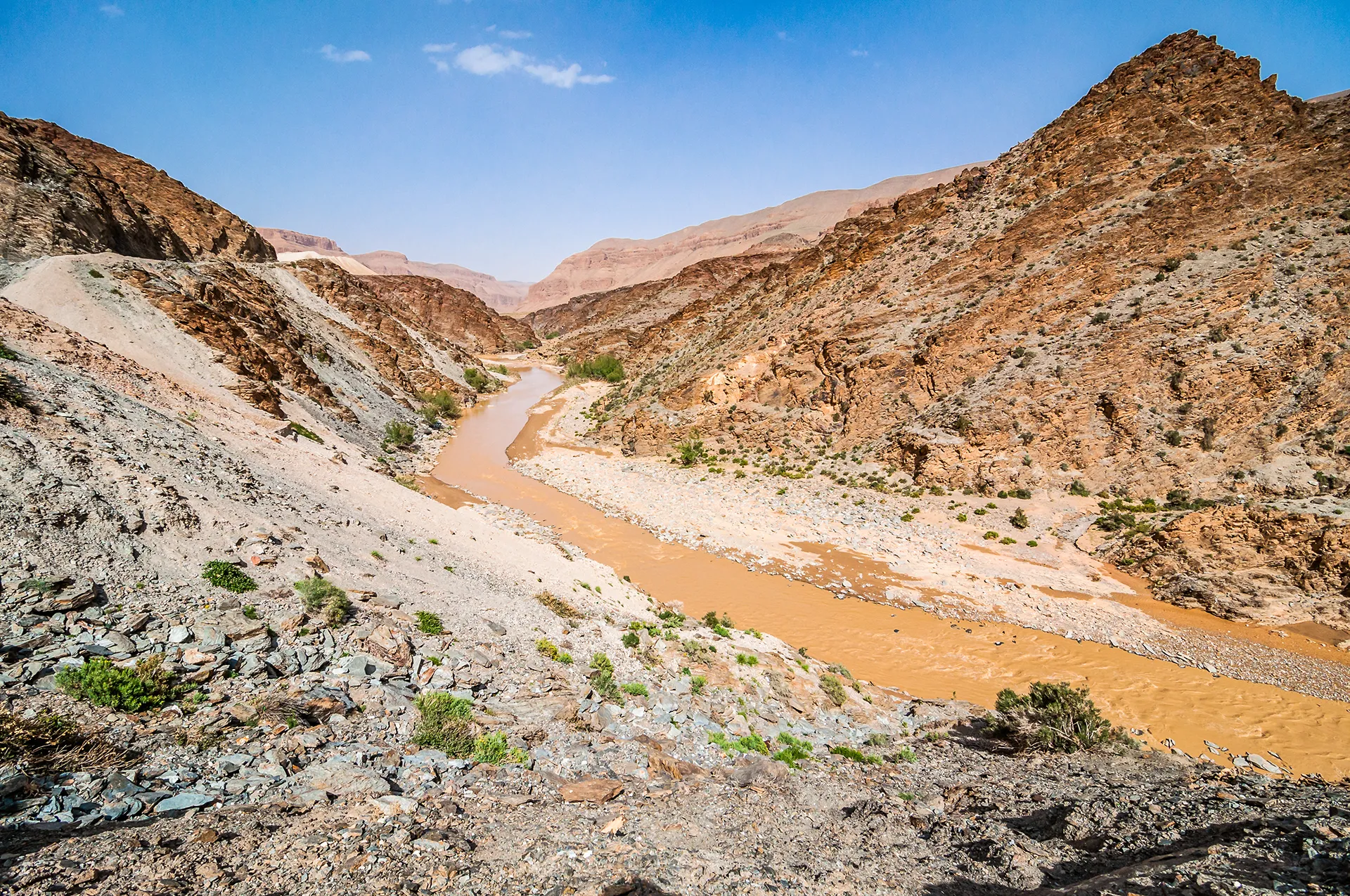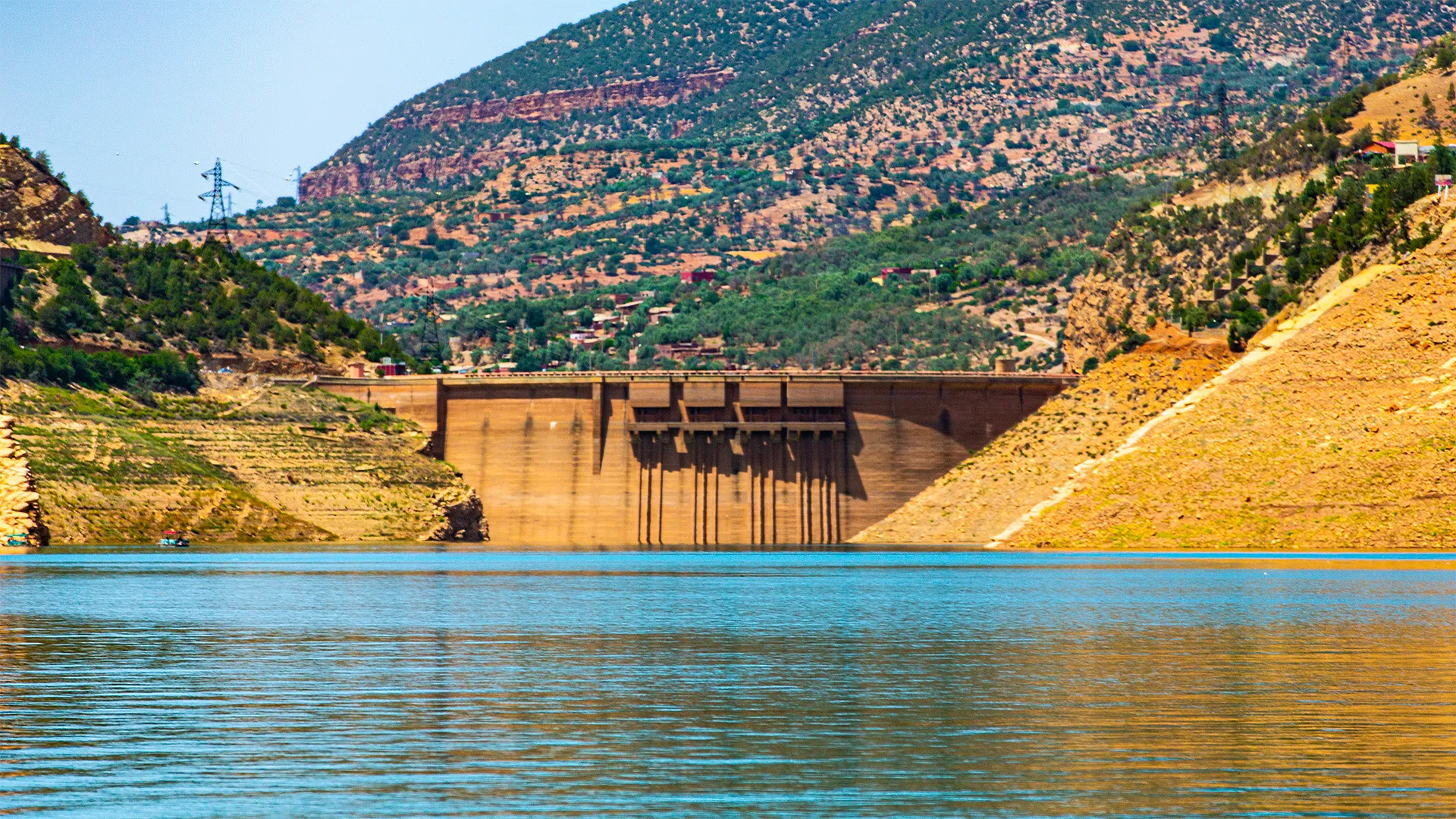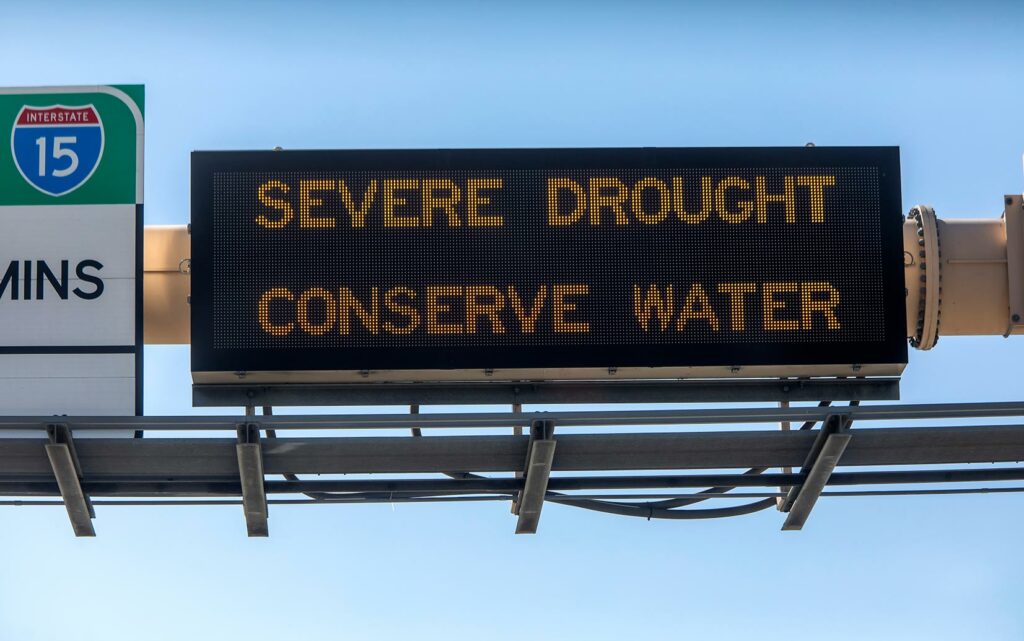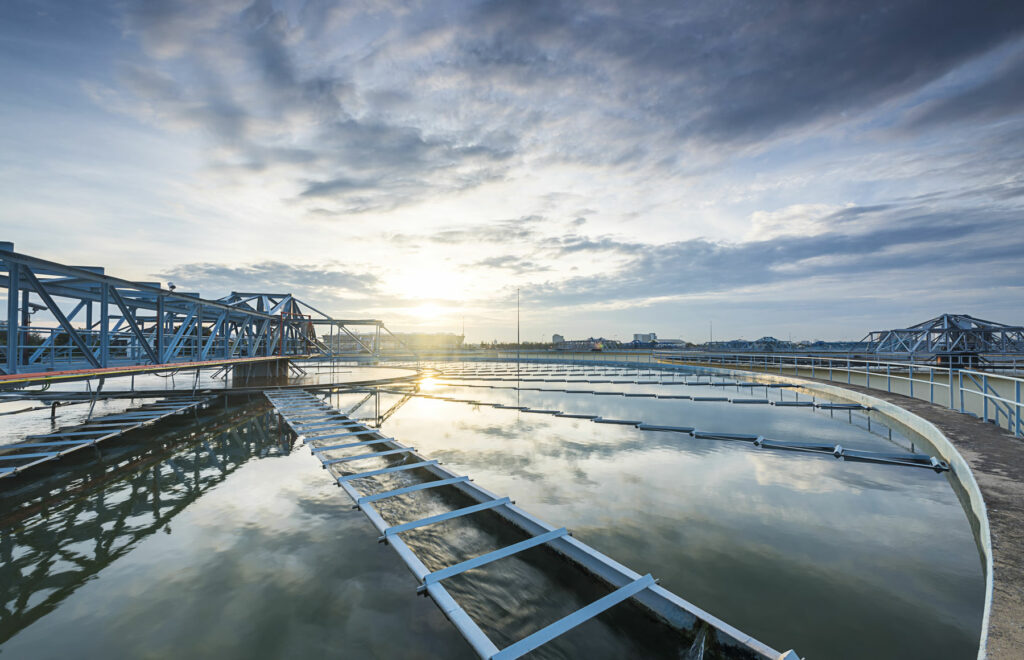Faced with water stress and the threat of climate change, Morocco is launching an ambitious plan to make water management safer and more streamlined within the next 30 years. With 625 cubic metres of water per capita per year, half as much as in the 1960s, Morocco has been classed by the UN as one of the countries at risk of water scarcity.

The Moulouya River is one of the biggest in Morocco. Its source is in the Atlas Mountains, and it runs into the Mediterranean. On its way, it turns oases green, provides shelter to migrating birds, and enables farmers to water their crops. For millennia, it has been a vital source of life. Since 2020, the Moulouya has no longer been making it to the Mediterranean Sea. It disappears before it gets there. Its flow is no longer powerful or constant enough. Instead, the Mediterranean runs up the riverbed for almost 15 kilometres. This salt water is dangerous for crops and is not suitable for consumption.
Douar Elil is a farmer. He has lost his whole harvest of canary melons. They dried out in the field due to a lack of good quality water. There’s not enough water for his field of artichokes either.
In Morocco, especially in the rural and fringe areas, water management used to be a virtuous model of sharing and management. Organised in committees, the residents would all contribute to maintaining the pipes in order to share the resource. In some villages, even the price of water was established based on the resources per capita.
This system, which used to work so well, is threatened by two factors. Morocco’s population growth has been significant since the 1960s, it has gone from 12 million to 37 million with a lot of urban migration. At the same time, climate change can be felt through years of severe drought and floods that have damaged the water networks.
To cope with this, Morocco started implementing centralised water governance. Curricula are being developed to teach water governance at universities. Accountability and transparency approaches for monitoring water management are being set up. Water is a national challenge for the Kingdom of Morocco. The lack of access to high-quality water and competition between its different uses (drinking water, irrigation, and water for industrial use) mean that there are consequences on residents’ health and the country’s economy. Morocco’s economic growth has fallen from 7 % to 1.5 % between 2021 and 2022. Law No. 36-15 sets the rules for “integrated, decentralised, and participatory” governance to manage resources as best possible and guarantee that everyone has access to water.
Here too, like in Israel and California, reusing water is an approach that is being developed. Morocco has 153 wastewater treatment plants and will expand its use of greywater. 46 projects are underway for watering golf courses and green spaces, meaning 100 million cubic metres of water will be saved a year.
The Kingdom of Morocco did not wait for the UN and World Bank’s warning that climate change could have a devastating effect on the fragile balance of water management. 25 billion euros will be invested up to 2050, in particular in building 30 large dams. Morocco has 145 dams that, since the 1960s, have allowed people to live on reserves. The country is trying to conserve at least 2 years’ water consumption to cope with major drought. The margin is getting less comfortable every year. This plan aims to cover drier years and better manage and anticipate climate change. The race is on to ensure water supplies are effectively managed in Morocco.

Contact us for more :

Back California: Turning wastewater into drinking water Every year since 2012, southern California has been experiencing increasingly severe droughts. To protect the precious resource as

Back Wastewater treatment plants: What if we changed the name? Water treatment plants are changing in both how they look and how they function. They’re

Back Israel: “Make the desert bloom!” David Ben Gourion, founder of the state of Israël If there really is a miracle in Israël, it comes

Making biogas from our used water is possible, and it works. Treatment plants transform the organic waste into biogas to heat homes and fuel vehicles. This means significant savings in fossil fuels and a responsible approach to producing renewable energy, especially in the current climate.

| Cookie | Duration | Description |
|---|---|---|
| cookielawinfo-checkbox-analytics | This cookie is set by GDPR Cookie Consent plugin. The cookie is used to store the user consent for the cookies in the category "Analytics". | |
| cookielawinfo-checkbox-functional | The cookie is set by GDPR cookie consent to record the user consent for the cookies in the category "Functional". | |
| cookielawinfo-checkbox-necessary | This cookie is set by GDPR Cookie Consent plugin. The cookies is used to store the user consent for the cookies in the category "Necessary". | |
| cookielawinfo-checkbox-others | This cookie is set by GDPR Cookie Consent plugin. The cookie is used to store the user consent for the cookies in the category "Other. | |
| cookielawinfo-checkbox-performance | This cookie is set by GDPR Cookie Consent plugin. The cookie is used to store the user consent for the cookies in the category "Performance". | |
| viewed_cookie_policy | The cookie is set by the GDPR Cookie Consent plugin and is used to store whether or not user has consented to the use of cookies. It does not store any personal data. |